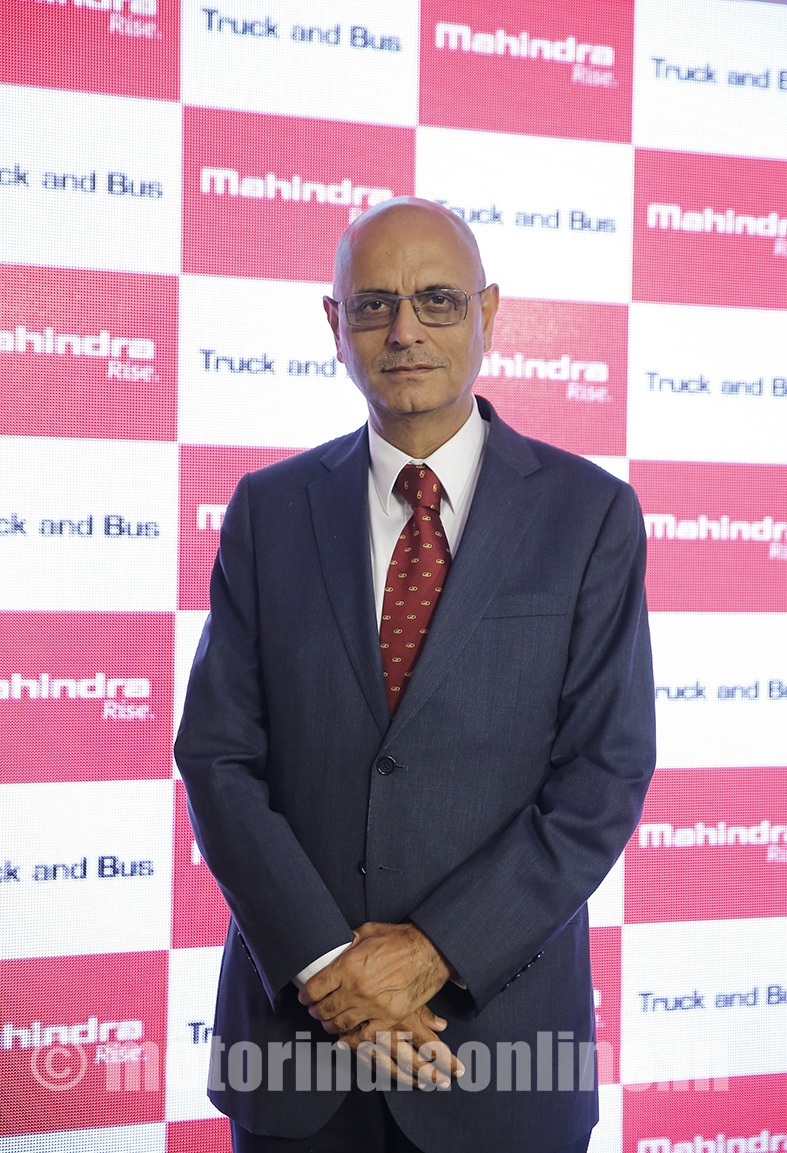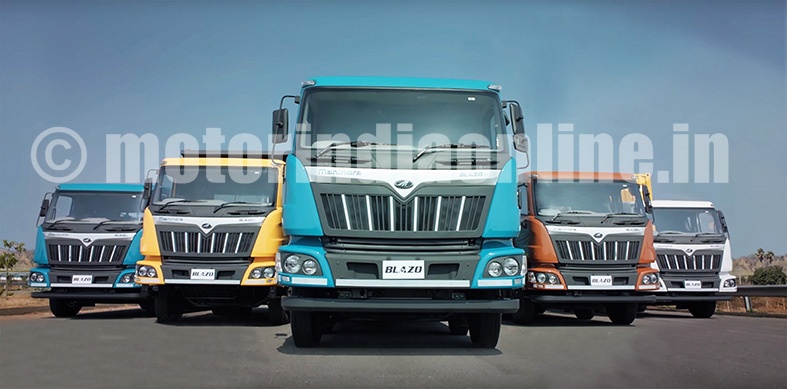“If the country will grow, the CV industry will also grow. If you produce, you have to transport. Policies in this have a limited role to play. The need is to transport. Road transport will continue to play a role in the growth of the country. If one believes in the India story, then he or she has to believe in the CV story. GST may change the structure of transportation, but it will not hamper the growth of the CV industry”, summarises Mr. Nalin Mehta, Chief Executive Officer, Mahindra Truck and Bus Division (MTBD) & Managing Director, Mahindra Truck and Bus Ltd. (MTBL). We bring you excerpts from our interaction with Mr. Mehta about developments in the market and also at MTBL.

Excerpts:
GST impact
The road transport business model itself will change because of GST. Some of the implications being:
- There will be realignment of distribution networks, stockyards, branches, etc. Companies will consolidate their current State-wise structure into regional structure, based on their business volumes in different areas.
- Load consolidation will impact the kind of vehicles that need to be deployed for long-distance movement
- Hub and spoke structures will come more into play. Long distance movement will be in higher tonnage vehicles, with lower tonnage ICVs, MCVs and LCVs being deployed for the short haul and secondary transportation
All these factors have currently forced transporters to be on a wait and watch mode in terms of truck purchase. Overall, GST would definitely benefit the transport industry in the following ways:
- It will move trucking towards higher tonnage trucks, due to consolidation of loads which are right now fragmented for tax reasons.
- State entry check-points will be reduced. This will reduce the transit time and improve the asset utilization, leading to lower costs
Scrapping of old vehicles
We certainly feel that scrappage policy is likely to benefit industry in terms of volumes & consequently towards profitability, which is essential for successfully meeting challenge of BS-VI implementation scheduled from 2020 onwards. Indian customers are accustomed to operated older vehicles beyond EMI. This largely increases their profitability & also helps us bag contracts with lower operating costs. An attractive incentive policy to encourage scrapping will motivate these customers to upgrade to better technology vehicles there by creating a level playing field to operators. We are completely equipped to handle such sudden surge in requirements from industry.
Technology role
BS-IV norms are being implemented nation-wide. You should see a marked improvement in fuel economy and lower maintenance costs, as a result. This will also facilitate On-Board Diagnostics (OBD) on vehicles, which help detect failures that adversely affect emissions and warn the driver about faults. Today technology has become an integral part of our lives and the need to stay connected is a basic necessity for fleet owners to improve productivity and individual owners for personal needs.
At Mahindra, we have always been technological pioneers with several technology firsts to our credit. We shall be soon offering DiGiSENSE technology empowers fleet operators, drivers, and service teams to access vital information about their vehicles, on a real-time basis from the driver’s seat and afar. We have also explored the potential of Technology by offering FUEL SMART – A unique & first of its kind technology where in based on demands of load & terrain, the driver can switch between different power modes.
Ground realities & training
The Budget for the coming year, which was announced in Feb’17, shows higher rural focus, in terms of investments and expected growth, which will lead to higher consumption in these areas. Such investment and growth will lead to spurt in transportation to rural areas.
Another provision in the Budget, Lower Tax on companies under Rs. 50 crore turnover, would be beneficial to many smaller transporters. As we also saw in the Budget, there is increased focus on highways construction, with a 12% increase in budget allocation compared to last year. MoRTH has accelerated the construction of highways to nearly 20 km per day and expects the revival of investments in infrastructure sector to contribute more than 2 percentage points to the country’s GDP in the next two years and to create five million jobs. The Ministry also plans to build five more Greenfield expressways across India, which is expected to reduce travel time and propel economic growth.
All of these measures should spur demand for transportation and thereby help increase the sale of commercial vehicles. With GST around the corner, there is tremendous potential for a major change in improvement in overall logistics efficiency across industrial sectors.
We will see a shift to larger capacity vehicles, while the smaller ones will be used for secondary and last mile distribution. We have Mobile Training Vans equipped with all the cut section aggregates and display of the technology which can go around to such small workshops in order familiarize them with the product and that the changes in the technology. We are also connecting them with the local parts retailers during this process of familiarization. We are also making them a part of our digital drive where they could stay connected with us for any further assistance on the product, part availability and the diagnosis. Nevertheless, as the technology upgrades to electronic based technology, the customers would always prefer to get their vehicles repaired or serviced from the company authorized service outlets.
Market trends
India is a growing economy, and the CV industry will have a good future. GST will re-define the hub and spoke model. ICVs will play a bigger role. Consumption in rural areas will influence the role of ICVs. Spending on nutrition (perishable goods) will influence the scope of ICVs. As the economy grows, people movement will increase. India is a vast country. Railway cannot reach everywhere. The need for buses will be there. There will need to move much population in semi-urban and rural areas. ICVs – we are investing in a world-class ICV, which will play an important role. This will be especially the case as consumption in the interior areas will increase.
